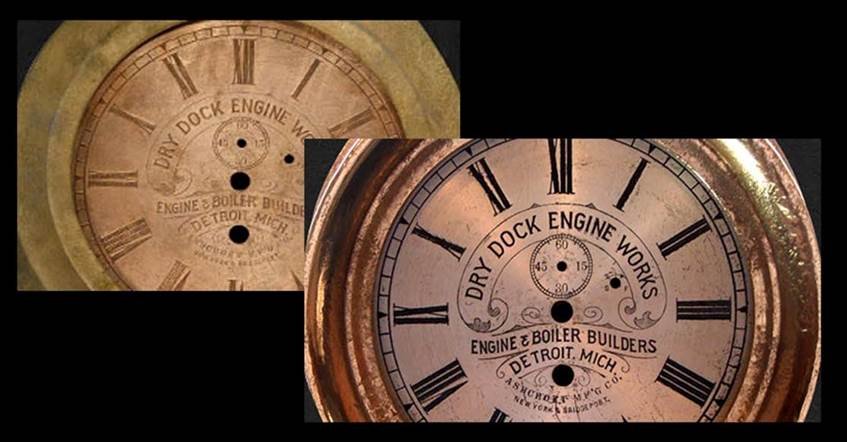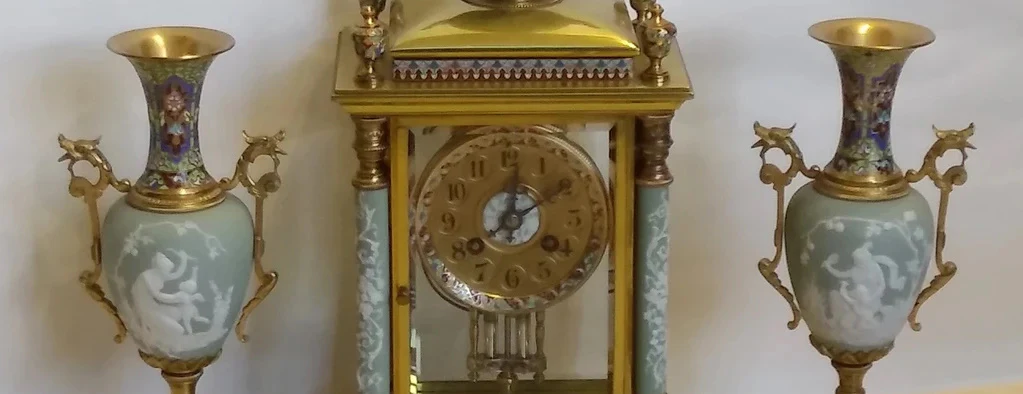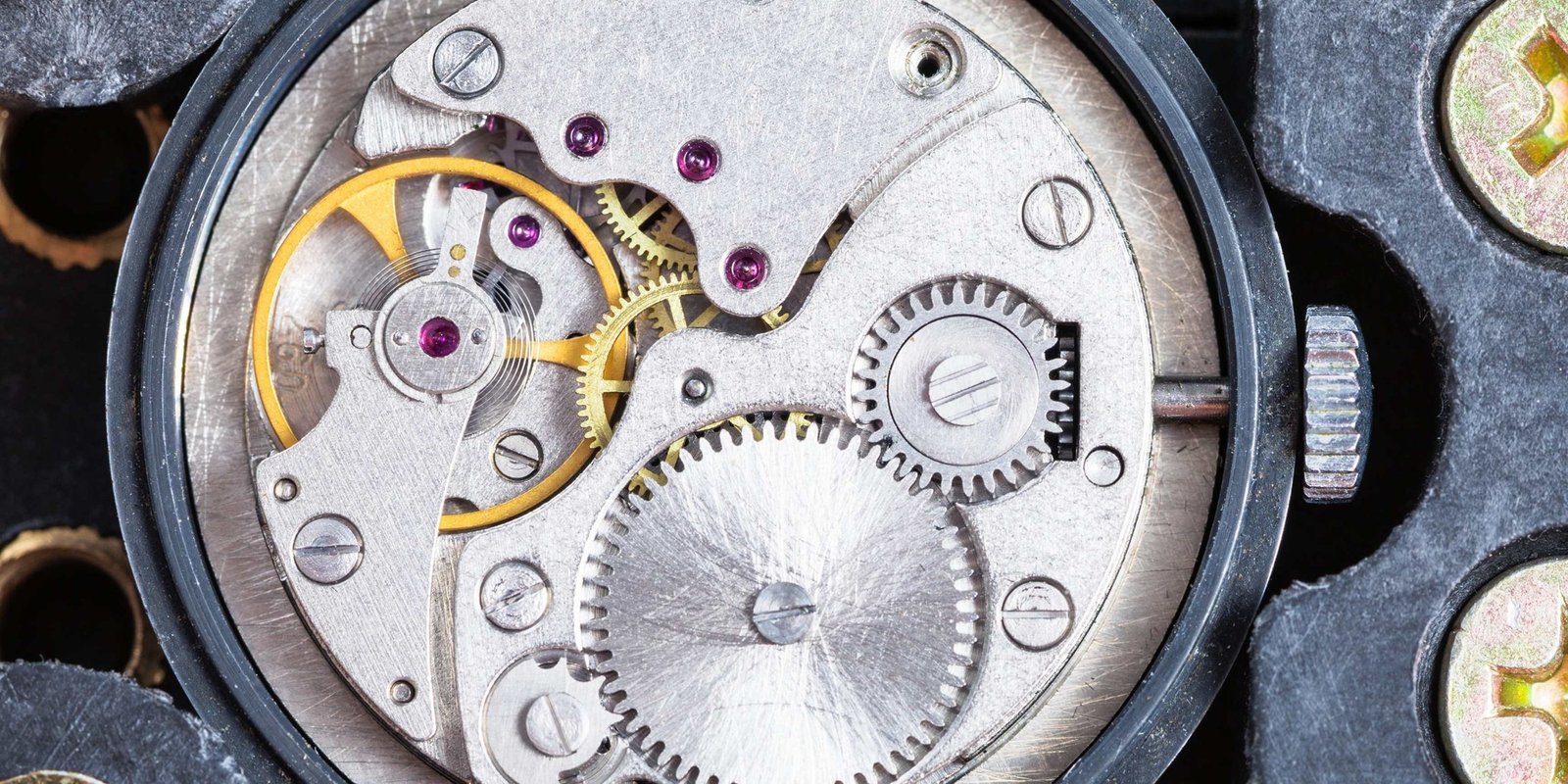Antique clocks are not only beautiful timepieces but also valuable collectibles, often fetching high prices at auctions or in the antique market. However, understanding the value of an antique clock involves considering multiple factors, from its historical significance to its overall condition. If you’re a collector or simply curious about what makes one clock more valuable than another, here’s a guide to the key factors that affect antique clock pricing.
1. Age and Historical Significance
The age of an antique clock is one of the most important factors in determining its value. Generally, the older the clock, the more valuable it is, especially if it dates back to a significant period in history. For example, clocks from the 18th and early 19th centuries are highly sought after, particularly if they were made by renowned clockmakers. Historical significance also plays a role—clocks connected to famous people, events, or places tend to carry a higher value. For instance, a clock owned by royalty or displayed in a historic estate can command a premium price.
2. Rarity and Production Numbers
Rarity is another crucial factor when determining the value of an antique clock. Clocks that were produced in limited quantities, or by famous makers who created only a few pieces, are typically more valuable than mass-produced models. Certain types of clocks, such as skeleton clocks, French Empire mantel clocks, or marine chronometers, may be rarer due to their complexity and specialized use, increasing their worth. In addition, if a clockmaker only produced a small number of clocks during their career, such as the Banjo Clocks by Simon Willard, these pieces often have a higher value due to scarcity.
3. Craftsmanship and Materials
The craftsmanship and materials used in making an antique clock can significantly impact its value. Clocks made from high-quality materials like bronze, gold, or marble, and featuring intricate designs or carvings, are more likely to be highly valued. For example, French Ormolu clocks—gilded bronze clocks from the 18th century—are prized for their elaborate detailing and the fine artistry that went into creating them. Similarly, a clock with hand-painted enamel, mother-of-pearl inlays, or fine glasswork adds to the appeal and value.
4. Maker’s Reputation
The reputation of the clockmaker is another critical element in pricing antique clocks. Famous clockmakers like Thomas Tompion, Abraham-Louis Breguet, or George Graham are revered for their precision, innovation, and artistry. Clocks bearing the name of such master craftsmen are often worth significantly more than those from lesser-known or anonymous makers. The provenance, or known history of ownership, can further boost a clock’s value, particularly if it was commissioned by or made for a notable figure or institution.
5. Condition and Functionality
The condition of the clock is an essential consideration when determining its value. A clock in excellent working condition, with all original parts intact, will be worth more than one that has been heavily restored or has missing components. Clocks that still function as timepieces, especially complex mechanical clocks with features like chimes, pendulums, or astronomical mechanisms, are highly desirable. Conversely, clocks that no longer function or show significant wear and tear may have reduced value, unless they are particularly rare or historically important.
6. Restoration and Authenticity
While restoration can improve the appearance and functionality of an antique clock, too much restoration or the use of non-original parts can diminish its value. Collectors often prefer clocks that retain their original components, including the movement, dial, and case. Authenticity is crucial—clocks with their original maker’s marks, inscriptions, or labels are more valuable than those without. When assessing a clock’s value, it’s important to verify its authenticity and avoid over-restored pieces that may lose their historical integrity.
7. Type and Style of Clock
Different types and styles of clocks vary widely in value, depending on their purpose and design. For example, longcase clocks (commonly known as grandfather clocks) tend to be more valuable than smaller mantel or wall clocks due to their size and complexity. Specific styles, such as Art Deco, Art Nouveau, or Victorian clocks, are also more desirable depending on the current trends in antique collecting. Marine chronometers, known for their precision and use in navigation, are particularly sought after and can fetch high prices at auction.
8. Market Demand

Finally, market demand plays a significant role in antique clock pricing. Certain types of clocks may be in vogue among collectors, driving up their value. The demand for vintage and antique items, including clocks, fluctuates over time based on trends, nostalgia, and cultural factors. For example, there may be periods when mid-century modern clocks are highly sought after, while in other times, baroque or rococo designs could be more popular. Monitoring the antique market and understanding these trends can help gauge the potential value of a clock.
Conclusion: A Timepiece’s Worth
Determining the value of an antique clock requires a careful evaluation of multiple factors, including age, rarity, craftsmanship, condition, and the reputation of the maker. Whether you are looking to buy, sell, or simply appraise an antique clock, it’s essential to understand these key elements that affect pricing. With a bit of knowledge and research, you can better appreciate the rich history and artistry behind these timeless pieces, making them not just valuable collectibles, but cherished artifacts of human ingenuity.





Yo! Just stumbled upon taigamewin99 and spent a hilarious afternoon there. Graphics are solid, and the gameplay is surprisingly addictive. Give it a go, you might just get hooked!
Been using ggwinbet for a while now. Solid place to bet, good odds and prompt payouts. Try this: ggwinbet
Als Alternative finden Sie zudem Antworten auf viele Fragen im FAQ-Bereich,
der über einen Link im unteren Bereich der Website zu
finden ist. Darunter befinden sich namhafte Unternehmen wie Play’n GO, Microgaming, NetEnt, Pragmatic Play, Yggdrasil und andere.
In den Bereichen Casino, Live-Casino und Mini-Spiele finden Sie Top-Titel von über 85 verschiedenen Spieleanbietern.
Dieser Bereich bietet ein realistisches Erlebnis mit professionellen Croupiers und einer Vielzahl von Spielen zur Auswahl, die das Glücksspiel in Echtzeit noch aufregender machen. Der Live-Casino-Bereich
von Rolletto bringt den Nervenkitzel echter Casinospiele direkt zu
den Spielern nach Hause. Das Casino bietet 58 verschiedene Versionen von Roulette, einschließlich europäischer, amerikanischer und französischer Varianten, sowie 15 Varianten von Baccarat und 44 Blackjack-Titel.
Rolletto Casino bietet eine große Auswahl an modernen Slots, darunter exklusive Spiele wie Rolletto-King und beliebte Titel wie
Book of Dead, Sweet Bonanza und Big Bass Bonanza. Zusätzlich bietet das Casino die Möglichkeit, Spiele im Demo-Modus auszuprobieren, sodass Sie sie kostenlos testen können.
References:
https://online-spielhallen.de/rizk-casino-erfahrungen-ein-detaillierter-blick-auf-meine-spielerlebnisse/
Die meisten Angebote benötigen mindestens €20, werden sofort wirksam und erscheinen in Ihrer Bonus-Wallet.
Um Ihren Aktionscode zu verwenden, gehen Sie zur Kasse, öffnen Sie die Einzahlung und geben Sie den Code in das Feld über dem Betrag ein. Das WinSpirit-Team ist rund um die Uhr online und kann auf Anfrage Opt-ins ändern, Boni erneut senden oder
den Spielfortschritt erklären. Damit alles reibungslos läuft,
gibt es Freispiele in Gruppen zu je 25 Personen. Stellen Sie
Ihr Profil so ein, dass Sie jede Woche vor dem Spielen Cashback erhalten.
Wählen Sie ein Abenteuer, bei dem Sie sofort Einzahlungen vornehmen können,
Spiele schnell geladen werden und der Kundenservice rund um die
Uhr verfügbar ist. Bei WinSpirit können Sie sicher sein, dass Ihre Daten geschützt sind und faire Spielbedingungen herrschen.
In meiner langjährigen Erfahrung habe ich viele dunkle Seiten des Online-Glücksspiels gesehen und kann daher die Wichtigkeit
einer sicheren Spielumgebung nicht genug betonen.
Insgesamt sind bis zu 400 € Bonusguthaben sowie 100 Freispiele für ausgewählte Slots möglich.
Neue Kundinnen und Kunden erhalten im Winspirit Casino ein attraktives Willkommenspaket.
Spielen Sie sicher – setzen Sie sich Grenzen, machen Sie Pausen und
wenden Sie sich bei Bedarf an den Support. Winspirit bietet rund um die Uhr mehrsprachigen Support, großzügige Cashback-Angebote, Turniere
und maßgeschneiderte Aktionen für jeden Spieler.
Winspirit bietet einen umfassenden Kundendienst, der rund um die Uhr verfügbar ist,
um alle Fragen und Anliegen zu klären. Ja, neue Spieler bei Winspirit können von verschiedenen Bonusangeboten profitieren,
darunter ein Willkommensbonuspaket, das einen Prozentsatz des ersten Einzahlungsguthabens
erhöhen kann.
References:
https://online-spielhallen.de/legiano-casino-erfahrungen-ein-umfassender-uberblick/
Die Registrierung ist einfach gehalten, erfordert jedoch eine Verifizierung über den Drittanbieter
Jumio, um Identität und Volljährigkeit sicherzustellen und so den Schutz vor
Geldwäsche und Teilnahme Minderjähriger zu gewährleisten. Der
Betreiber besitzt darüber hinaus eine staatliche
Lizenz für Casinospiele. Über die übersichtlichen Menüleisten lassen sich neue und beliebte Slots, aktuelle Aktionen sowie spannende Slot-Turniere
im Handumdrehen finden. Als Tochter der Kling Automaten GmbH, die über 160 Spielhallen in Deutschland betreibt,
bringt Jokerstar die Erfahrung eines etablierten Unternehmens
mit und setzt dabei auf umfassenden Spielerschutz für deutsche Spieler.
Im Folgenden stellen wir Ihnen unsere Top
10 Anbieter mit der GGL-Lizenz für Virtuelle Automatenspiele aus Deutschland vor.
Glücksspiele garantieren nie einen Erfolg, aber kluge Entscheidungen machen den Unterschied.
Gransino bietet 10% Cashback wöchentlich an, man diesen also mehrfach nutzen. Bei Oscarspin gibt es ganze 300 Freispiele auf
die erste Einzahlung zu fairen Bedingungen.
Diese Spiele umfassen Klassiker wie Roulette, Blackjack und Baccarat, die in nahezu jedem Online Casino zu finden sind.
Tischspiele gehören zu den klassischen Angeboten in Online
Casinos und sind sehr beliebt bei Spielern. Die Verfügbarkeit von Live Casino Spielen nimmt in Online
Casinos ständig zu, was den Spielern eine Vielzahl von Optionen bietet.
Live Casino Spiele bieten ein authentisches Erlebnis, da die Spiele in Echtzeit
von echten Dealern geleitet werden.
References:
https://online-spielhallen.de/jet-casino-test-2025-login-boni-zahlungen-sicherheit/
Verbessern Sie Ihre Wochenendwetten mit einer 35%-Gratiswette für jede Einzahlung über
30 €, die am Freitag, Samstag oder Sonntag erfolgt.
Die Freebet ist für jedes Sportereignis gültig und wird wöchentlich aktualisiert.
Platziere die ganze Woche über Wetten und erhalte bis zu 100 € Freebet, je nach Gesamteinsatz.
Diese Freebet wird alle drei Tage erneuert, sodass Sie
regelmäßig die Chance haben, wieder zu gewinnen. Genieße unsere NBA-spezifische Aktion, bei der du dich für eine
10 € Freebet qualifizierst, wenn du eine Wette von 15 € oder mehr auf NBA-Spiele verlierst.
Die bekanntesten Entwickler sind Microgaming, NetEnt, Evolution Gaming und
Play’N Go.Top-Casinos bieten Spiele mit ausgezeichneter Kompatibilität.
Darüber hinaus haben Sie nur dann Anspruch auf Cashback, wenn der
Auszahlungsbetrag den Betrag Ihrer Einzahlung nicht übersteigt.
Wenn ein Casinoanbieter alles tut, um zu verhindern, dass Spieler Bonusvorteile erhalten, wird eine solche Spielothek von unseren Empfehlungslisten ausgeschlossen. Das
Team auf unserer Website besteht aus iGaming-Experten und erfahrenen Online-Gamblers, die es sich zur Aufgabe gemacht haben, neue und
bestehende österreichische Glücksspielbanken für Sie
zu testen, um Ihnen die besten Online Casinos
AT empfehlen zu können. Daher haben unsere iGaming-Experten die
MrBet Spieleplattform für Sie getestet und Sie mit den neuesten Informationen zu dieser Glücksspielbank versorgt.
Doch wie wählt man einen passenden Anbieter aus, der dafür die günstigsten Konditionen bietet?
References:
https://online-spielhallen.de/legzo-casino-meine-umfassenden-erfahrungen-seit-10-jahren/